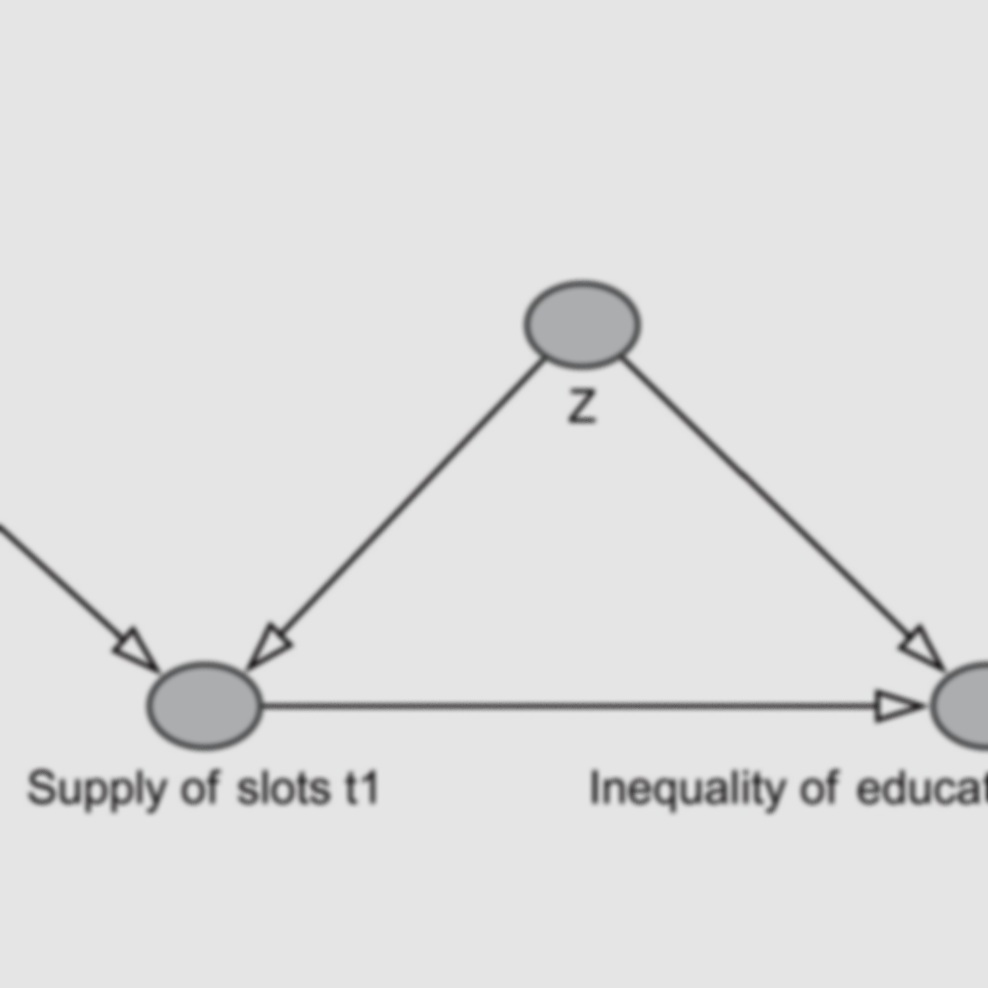methodology
statistical methods
Papers include: a method to decompose odds ratios describing social background inequalities in educational attainment into primary (indirect) and secondary (direct) effects, a discussion of the linear in probability model, and a method to compare social class and income mobility for the same individuals.
Battey, H., Cox, D.R., and Jackson, M. (2019). “On the Linear in Probability Model for Binary Data.” Royal Society Open Science, 6.
Abstract: “The analysis of binary response data commonly uses models linear in the logistic transform of probabilities. This paper considers some of the advantages and disadvantages of simple least-squares estimates based on a linear representation of the probabilities themselves, this in particular sometimes allowing a more direct empirical interpretation of underlying parameters. A sociological study is used in illustration.”
Cox, D.R., Jackson, M. and Lu, S. (2009) “On Square Ordinal Contingency Tables: A Comparison of Social Class and Income Mobility for the Same Individuals,” Journal of the Royal Statistical Society, Series A (Statistics in Society), 172, 2, 483-493.
Abstract: “Square contingency tables with matching ordinal rows and columns arise in particular as empirical transition matrices and the paper considers these in the context of social class and income mobility tables. Such tables relate the socio‐economic position of parents to the socio‐economic position of their child in adulthood. The level of association between parental and child socio‐economic position is taken as a measure of mobility. Several approaches to analysis are described and illustrated by UK data in which interest focuses on comparisons of social class and income mobility tables that are derived from the same individuals. Account is taken of the use of the same individuals in the two tables. Additionally comparisons over time are considered.”
Erikson, R., Goldthorpe, J.H., Jackson, M., Yaish, M. and Cox, D.R. (2005) “On Class Differentials in Educational Attainment,” Proceedings of the National Academy of Sciences, 102, 27, 9730–9733.
Abstract: "Social class differentials in educational attainment have been extensively studied in numerous countries. In this paper, we begin by examining class differentials in the progression to higher secondary education among 16-year-old children in England and Wales. As has been shown for other countries, the differentials result both from the primary effects of differing levels of academic performance of children of different class background and from the secondary effects of differences in the educational choices that these children make at given levels of performance. Through counterfactual analyses in which the performance distribution of one class is combined with the choice distribution of another, primary and secondary effects are decomposed and the former are shown to be roughly three times the size of the latter."
Sociological research METHODS
I have written papers on existing research methods (e.g. content analysis, experimental design) and the application of these methods in sociology.
Jackson, M. (2021). “Expansion, Enrollment and Inequality of Educational Opportunity,” Sociological Methods and Research, 50, 3: 1215-1242.
Abstract: “This article calls into question the view that educational expansion has a causal effect on class-based inequalities of educational opportunity. This view, the impetus for many studies, is flawed because the empirical literature is hampered by poor measures of expansion and because it rests on simplistic understandings of the causal structure that relates supply, demand, and inequality of educational opportunity (IEO). The literature arose as it did because the institutions that are actually expanding and allocating—schools, colleges and universities—are treated as black boxes in conventional macro-level theories of expansion. If the black box is opened, we see that educational institutions at once make decisions about expansion and allocation, thus undermining a simplistic model that has expansion affecting allocation. Drawing upon examples from college education in the United States, I argue that the field must develop new measures of educational expansion and supply in order to identify the true relationship between educational expansion and IEO.”
Jackson, M. and Cox, D.R. (2013). “The Principles of Experimental Design and Their Application in Sociology,” Annual Review of Sociology.
Abstract: "In light of an increasing interest in experimental work, we provide a review of some of the general issues involved in the design of experiments and illustrate their relevance to sociology and to other areas of social science of interest to sociologists. We provide both an introduction to the principles of experimental design and examples of influential applications of design for different types of social science research. Our aim is twofold: to provide a foundation in the principles of design that may be useful to those planning experiments and to provide a critical overview of the range of applications of experimental design across the social sciences."




